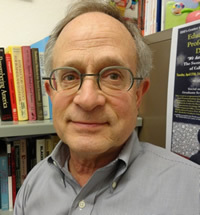Number of QMEs Falls as Panel Requests Increase
Friday, October 20, 2017 | 4
OAKLAND, California — The number of qualified medical evaluators in California’s workers’ comp system continues to decline, even as requests for QME panels have soared 87% over the last 10 years, according to a report unveiled Thursday.

Frank Neuhauser
And a provision of Senate Bill 863 that limits the number of locations at which QMEs can be registered has resulted in a more even distribution of QME panels among providers, according to the report, written by University of California, Berkeley, researcher Frank Neuhauser.
Neuhauser presented the QME report on Thursday to the Commission on Health and Safety and Workers’ Compensation, a joint labor-management panel. The report is an update to a 2010 review of the QME process prepared for CHSWC.
The number of QME providers fell from 3,187 in 2007 to 2,649 in 2016, a 17% decrease. The number of panel requests has increased from 70,730 in 2007 to 131,106 last year. The increase was seen solely among claimants with attorney representation.
“Access to QMEs does not appear to be an important current problem, but there are signs that delays in getting an evaluation may be developing,” the report said.
Orthopedic specialties are underrepresented among QME relative to the number of panel requests, Neuhauser said. And there’s been an uptick in the past three years in the number of panels where a subsequent panel is requested because the QME was not available within 60 days.
Neuhauser said unrepresented workers are likely discouraged from requesting a QME panel due to a requirement to serve claims administrators with a notice of the request. The worker must also sign a form saying, under penalty of perjury, that the information submitted is correct.
Neuhauser said the latter seems unnecessary, and the claims administrator could instead by notified automatically by the Division of Workers’ Compensation.
About 40% of panel requests from represented claimants are on the issue of compensability, Neuhauser said. Permanent disability accounted for 21% of requests, and permanent and stationary status was the reason for 11% of requests.
“I have so many questions about this study,” commission member Doug Bloch said after Neuhauser’s presentation. “If this is done wrong, somebody doesn’t get treatment.”
But with several other agenda items to cover during the meeting, the commission asked Neuhauser few questions. Instead, some said they were interested in holding a study session to learn more about the QME issue.
In public comments, Steve Cattolica, director of government relations for the California Society of Industrial Medicine and Surgery, said he was in favor of a commission study session in which the public and commission members could hear answers to the many questions on the report.
Commission member Angie Wei corrected Cattolica, telling him the study session would not be open to the public. The public will have time to weigh in during the report’s comment period and at public meetings of the commission, she said.
The commission took no formal vote on the idea of a study session.
The QME report comes as three medical providers have accused the DWC of using underground regulations to deny QME recertification. The former QMEs said in a complaint filed last month in Los Angeles County Superior Court that the division adopted a new interpretation of the complexity factors necessary to justify billing code ML 104 without going through the rule-making procedure. They say the DWC then accused them of not following billing rules as justification for refusing to renew their QME certification.
In a blog post on Wednesday, attorney Julius Young said that Neuhauser’s QME report does not appear to reference the DWC’s recent actions “to delay or deny recertification to scores of QMEs who are alleged to have violated a recent DWC interpretation of billing codes.” The report is still in a draft form and could be modified before CHSWC finalizes it.
Young said on Thursday that he’s concerned that stakeholder input wasn’t gathered in the preparation of the report. But the public will have an opportunity to comment on the report, now that CHSWC has posted it for comment, he said.
CHSWC also heard a report on Thursday from Dr. Raymond Meister, DWC’s executive medical director, on upcoming changes to the Medical Treatment Utilization Schedule and implementation of a new workers’ comp drug formulary.
Updates to the MTUS will be finalized in “the very near future,” Meister said. And formulary regulations are on track to be implemented on Jan. 1. The hope is to have the formulary finalized before then, so people can start familiarizing themselves with it, he added.
Cattolica from CSIMS asked whether the effective date of the formulary could be pushed back — to March 1, for example — to give the industry more time to prepare.
The QME report is available here.



Comments